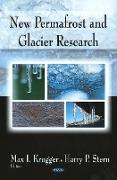- Start
- New Permafrost & Glacier Research
New Permafrost & Glacier Research
Angebote / Angebote:
In geology, permafrost or permafrost soil is soil at or below the freezing point of water (0 °C or 32 °F) for two or more years. Ice is not always present, as may be in the case of nonporous bedrock, but it frequently occurs and it may be in amounts exceeding the potential hydraulic saturation of the ground material. Most permafrost is located in high latitudes (i.e. land in close proximity to the North and South poles), but alpine permafrost may exist at high altitudes in much lower latitudes. The extent of permafrost can vary as the climate changes. Today, approximately 20% of the Earth's land mass is covered by permafrost (including discontinuous permafrost) or glacial ice. A glacier is a large, slow-moving mass of ice, formed from compacted layers of snow, that slowly deforms and flows in response to gravity and high pressure. The word glacier comes from French via the Vulgar Latin glacia, and ultimately from Latin glacies meaning ice. Glacier ice is the largest reservoir of fresh water on Earth, and second only to oceans as the largest reservoir of total water. Glaciers cover vast areas of polar regions, are found in mountain ranges of every continent, and are restricted to the highest mountains in the tropics. The processes and landforms caused by glaciers and related to them are referred to as glacial. The process of glacier growth and establishment is called glaciation. Glaciers are sensitive monitors of climate conditions and are crucial to both world water resources and sea level variation. This book presents the latest research on both permafrost and glaciers.
Folgt in ca. 10 Arbeitstagen

